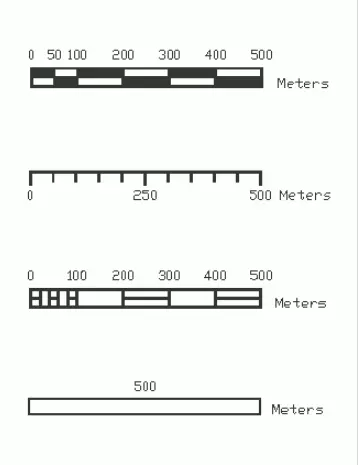Different Types Of Scale Meters Measurements & Their Function

A scale meter, also called an architect’s ruler, is an instrument for transforming dimensions or measurements.
It has different scales, which are the proportions to which a real object can be converted within a drawing.
It is normally a tool widely used by architects, contractors, and graphic designers. They are found in three presentations, the most common being the prismatic one that contains 6 different scales.
” A scale meter, often known as a ruler, is a measuring instrument typically marked with units of length, used to measure distances or dimensions with precision. It provides a straightforward and accurate means of quantifying lengths in centimeters, inches, or other specified units”.
Scale meter functions:
The scale meter was created to convert the real dimensions of an object to a drawing or vice versa, without requiring long and complex mathematical calculations, becoming the main tool for people who prepare or read plans.
It is used to prepare accurately calibrated plans because it allows the dimensions to be corroborated when a work is under construction. It is used to measure the lengths of walls, doors and windows on the drawn paper, so that they represent the measurements of the real infrastructure.
As far as graphic design is concerned, it fulfills exactly the same function.
How do you read a scale meter?
If an object is too small or too large to be drawn at its actual size, the designer or architect must increase or reduce its scale. When it is reduced, measurements must be subtracted from the original size to be able to draw it on a plane. On the contrary, expanding it is taking those small measurements out of the plane.
The scale meters have on each side to the left, just before zero, the scale that corresponds to that particular side. It is essential to use the correct scale.
When reading a plan or project, you can see said scale on the plans as a guide for what to transform, but when creating it, it is necessary to first select the scale depending on the size of the drawing.
The total number of scales will depend on the type of scale meter. These generally reflect fractions of a centimeter, which are proportional to a meter in actual dimensions.
To build through a scale meter, the given scale must first be selected. Subsequently, it is necessary to align the zero mark with the beginning of the length to be measured. If the distance is identically equal to a line on the ruler, it will mean that the actual measurement is one meter.
Types of scale meters:
Depending on their material, the scales are built with beech wood, plastic or aluminum, the latter two being the most resistant. Due to its model, there are planes with four scales, squares with eight scales and triangular planes with six scales.
The most frequently used ones are:
- Flat scale meters: It can contain between two or four scales, which are pairs and are usually: 1:1 / 1:100 1:5 / 1:50 1:20 / 1:200 1:1250 / 1:2500.
- Triangular scale meters: They are the most common, this type contains 6 scales whose values are: 1:1 / 1:10 1:2 / 1:20 1:5 / 1:50 1:100 / 1:200 1:500 / 1 :1000 1:1250 / 1:2500.
Flat scale meter:
Flat scale meters are compact, lightweight measuring devices with a flat, straight edge and calibrated markings for precise measurement of distances or dimensions.
Uses:
They are commonly used in drafting, engineering, and construction for accurate linear measurements on flat surfaces.
Triangular scale meter:
Triangular scale meters are specialized measuring tools featuring triangular-shaped bodies with calibrated markings on each edge, enabling accurate measurements and conversions in different scales and ratios simultaneously.
Uses:
Widely used in architectural and engineering drawings, they facilitate precise scaling and dimensioning of plans and designs.




